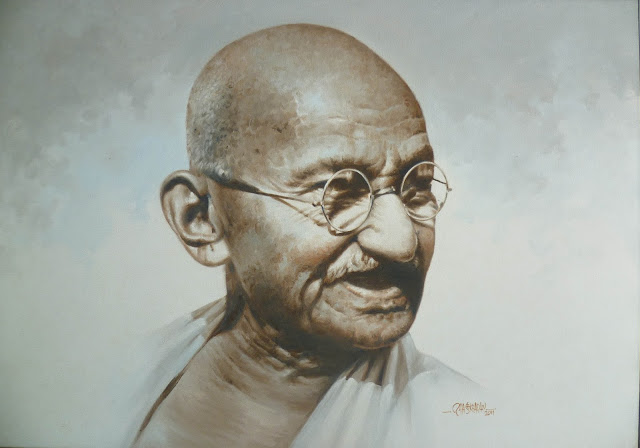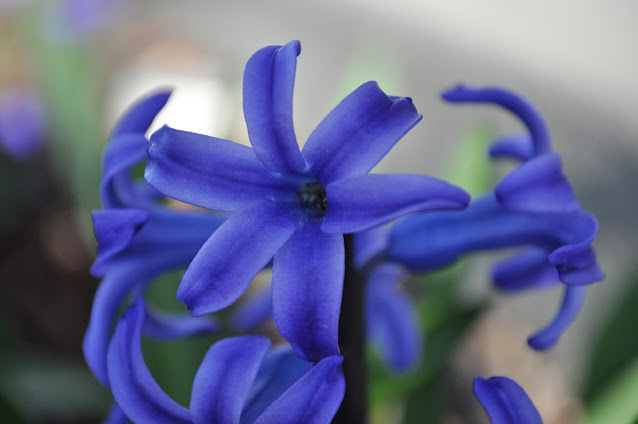Cbse Class 12 Indigo Summary
In December 1916, Gandhi went to Lucknow to attend the annual meeting of the Indian National Congress. There were 2,301 delegates and many visitors. A farmer from Champaran, Rajkumar Shukla asked Gandhi to come to his district. Wherever Gandhiji went, Shukla would follow him. In 1917, Gandhi and Shukla boarded the train for Patna. Shukla took Gandhi to the house of a lawyer named Rajendra Prasad. Cbse Class 12 Indigo Summary in hindi.They could not meet him because he was out of town.
Gandhiji decided to first go to Muzaffarpur to get complete information about the situation in Champaran. He reached Muzaffarpur by train at midnight on 15 April 1917. He was received at the station by Professor JB Kriplani. Gandhiji stayed there for two days. The news about the arrival of Gandhiji and the nature of his mission (special work) spread quickly through Muzaffarpur to Champaran. The farmers cultivating the share of Champaran started reaching there. The lawyers of Muzaffarpur informed Gandhiji about the cases going on in the court. He threatened the lawyers for collecting more fees from the farmers cultivating these divisions. He thought that the courts were useless for these oppressed and frightened farmers. The real relief for them was to be free from fear.
Then Gandhiji came to Champaran. He began by trying to collect facts from the secretary of the British Landowners' Association. The secretary refused to inform the outsider. Gandhiji said that he was not an outsider. After this, Gandhiji went to meet the British Government Commissioner of Tirhut Division. The commissioner started harassing Gandhiji and advised him to leave Tirhut division. Instead of leaving the area, Gandhi went to the capital of Champaran, Motihari. Cbse Class 12 Indigo Summary in english.Many lawyers also accompanied him. A huge crowd of people welcomed him at the railway station. This was the beginning of their liberation from the fear of British rule.
A farmer was abused in a nearby village. The next day Gandhiji rode on the back of an elephant. Soon he was stopped by the messenger of the Superintendent of Police and ordered to return to the city in his horse carriage. Gandhiji obeyed this order. The messenger brought Gandhiji home in a car. Then he gave Gandhiji a notice to leave Champaran immediately. Gandhiji signed the receipt and wrote on it that he would disobey the order. Gandhiji received a summons (court order) to appear in the court the next day. At night Gandhi sent a telegram to Rajendra Prasad, sent instructions to the ashram and sent the information to the Viceroy by telegram.
Thousands of farmers gathered around the court. The employees began to feel powerless. The administrators/officers wanted to consult people superior to them. Gandhiji opposed the delay. The magistrate said that he would announce the punishment (punishment) after two hours' leave. He asked Gandhiji to grant him bail for 120 minutes. Gandhiji refused. The judge released him without bail. After the pause, the court resumed. The judge said that he will not pronounce the judgment (judgment) for several days. He ordered Gandhiji to remain free.Cbse Class 12 Indigo Summary in short.Gandhiji asked the prominent lawyers about the injustice being done to the sharecropping farmers. They discussed among themselves. Then he told Gandhiji that he was ready to follow him and go to jail. Gandhi then divided this group into pairs and fixed the order in which he would make arrests. After several days, Gandhi was informed by the magistrate that the matter had been closed. For the first time in modern India, civil disobedience was victorious.
Gandhiji and the lawyers started investigating the grievances of the farmers. About ten thousand farmers became Witnesses. Documents (evidence) collected. Gandhi was summoned by the Lieutenant Governor, Sir Edward Gate. He met the Lieutenant Governor four times. A government commission was appointed to investigate.
Initially Gandhi ji stayed in Champaran for seven months and then came several times for brief visits. The government investigation gathered evidence against the owners of large farms. They agreed in principle to return the money to the farmers. Gandhiji asked for only 50 per cent. The representative of the owners of large farms offered to return 25 percent. Gandhiji agreed. Barrier expired/broken.
Gandhi made it clear that the amount to be returned was less important than the fact that the landlords were forced to give some money and some of their prestige. The farmer now saw that he had rights as well as his protectors. He learned courage. The events justified Gandhi's position. Within a few years, the British landowners gave up their vast plots. They have now returned to the farmers. Indigo cultivation has become invisible (disappeared).
Gandhiji wanted to do something to remove the cultural and social backwardness of the villages of Champaran. He prayed for the teachers. Gandhi's two young disciples, Mahadev Desai and Narhari Parikh, and their wives voluntarily offered themselves to the cause. Many also came from Mumbai, Poona and remote parts of the country. Gandhi's youngest son, Devdas, came from the ashram and Mrs. Gandhi also came. Primary schools were opened in six villages. Kasturba taught the rules of the ashram regarding personal hygiene and community cleanliness.
The health conditions were pathetic. Gandhiji volunteered to get the services of a doctor for six months. three medicines. Available were castor oil, quinine and sulfur ointment. Gandhi's attention turned towards the condition of the dirty clothes of women. A woman told Kasturba that she had only one saree. During his long stay in Champaran, Gandhi kept a vigil on the ashram from afar and sent regular instructions by post.Cbse Class 12 Indigo Summary.
The Champaran episode was a turning point in Gandhi's life. It didn't start out as defiance. It originated as an attempt to alleviate the sufferings of the poor farmers. Gandhiji's politics was practically connected with the daily problems of crores of people. He tried to shape a new independent Indian who could stand on his own feet and thus make India free.
Gandhiji also taught the lesson of self-reliance to his followers. Gandhi's lawyer friends thought that it would be better for the pacifist Charles Freire Andrus to stay in Champaran and help him. If Gandhiji agreed, then AIDS would have agreed. But Gandhiji strongly opposed it. He said, “The motive is just and you must depend on yourself to win the war.”
So self-reliance, Indian independence and sharecroppers were all tied together.
_Thanks for visiting I hope this article is helpful for you👍
_Please comment your words 🙏




Post a Comment